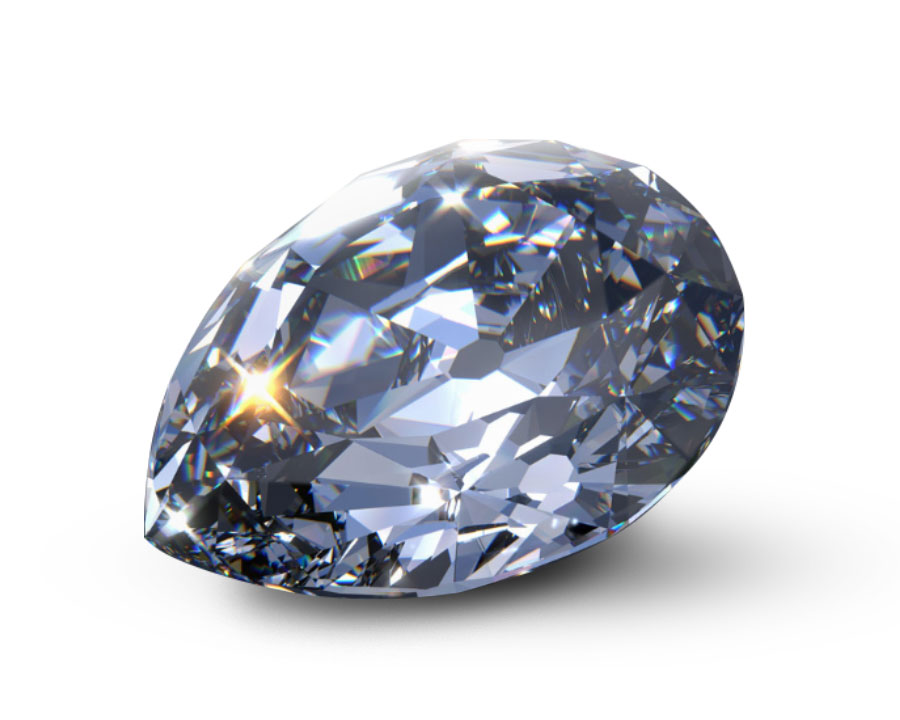The largest diamond in the world
At the moment, the largest known diamond in the world is the Cullinan I, also known as the Star of Africa. This diamond was found in South Africa in January 1905. It was mined in Mount Pretoria, near the city of Pretoria (now it is the Republic of South Africa).

"Cullinan I" was part of a larger diamond crystal, which weighed about 3,106 carats (621.2 grams). After mining, it was divided into several large diamonds, the largest of which was the Cullinan I. It weighs 530.2 carats (106.0 grams) and is one of the most significant and rare diamonds in the world.
"Cullinan I" was purchased by the government of the Transvaal (then an independent republic in South Africa) and in 1907 presented to King Edward VII of Great Britain in honor of his 66th birthday. Now this diamond is part of the British royal family collection and adorns the globe on the Imperial crown.
As for the cost of the Cullinan I, the exact amount can be difficult to estimate, as it is non-saleable and has historical and cultural value. However, its uniqueness and grandeur make it one of the most valuable diamonds in the world and it is recognized as one of the iconic diamonds in human history.
The Blue Moon Diamond
The largest known blue diamond in the world is the Blue Moon Diamond. This rare diamond was found in South Africa and was released to the public in November 2014.
The Blue Moon Diamond weighs 12.03 carats and is one of the largest and brightest blue diamonds ever found. Its unsurpassed beauty and intense blue color make it incredibly valuable and sought after.
After the discovery, the "Blue Moon Diamond" was acquired by the jewelry company Cora International. The diamond was later cut and made into a cushion shape with flawless 11 carat diamonds on each of its shoulders.
The exact value of the "Blue Moon Diamond" is difficult to estimate, as it is rare and unique. However, blue diamonds, especially those of this high quality, usually sell at auctions for amounts in the millions of dollars per carat. Thus, "Blue Moon Diamond" can be of enormous value due to its rarity and superior quality.

The Spirit of de Grisogono
To date, the largest famous black diamond in the world is the Swart Rar. This diamond was found in Central Africa and has an impressive weight of 312.24 carats.
"Svart Rar" was discovered in 2016 and was named after the founder of the jewelry house "de Grisogono", Fawaz Gruzalani. The diamond has a black color which makes it unique and rare.
After the discovery of "Swarth Rar" it was purchased by the jewelry house "de Grisogono" and turned into an impressive gemstone. The diamond was cut into a cushion shape with 9 facets and set in a specially crafted piece of white and black diamond jewelry.
Because of its rarity and the beauty associated with the natural black coloration that comes from the presence of boron in the diamond, the demand for this stone is huge and prices are impressively high. Those who have the opportunity to purchase such a diamond most often receive a small stone with some inclusions. This only confirms how rare and unique this diamond is, and why its value is estimated to be in the range of $30 million to $35 million.
Black diamonds are rare and in high demand all over the world. This is due to the fact that the number of these diamonds, like many others in general, is declining. Therefore, each significant find is of great value and can become historical through its sale or participation in the auction.

If you want to buy diamond jewelry, then Kantor Jewelry will be happy to help you find the best diamond and create a unique jewelry piece with a custom design. We will create a unique ring with a natural gemstone for your budget. We don't buy stones wholesale, we look for the best, most beautiful and profitable personal option for our clients. We seek out special stones for your request until you are satisfied.
Kantor Jewelry will help you to find the best setting option for your stone so it can please you with its beauty for many years as a part of a unique jewelry piece that will be passed from generation to generation.
























































